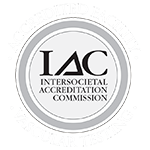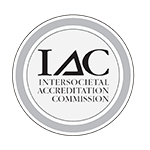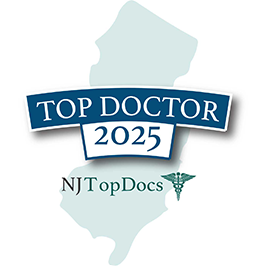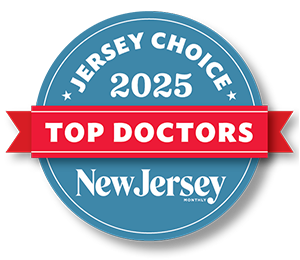
As part of our commitment at The Cardiovascular Care Group to provide education and transparency in the area of varicose and spider vein treatments, we want to provide you with responses to these Frequently Asked Questions that we hear most often.
Varicose veins affect approximately 35% of the adult population. They are essentially damaged veins that develop when tiny, one-way valves inside the veins weaken. In healthy veins, these valves push blood in one direction — back to our heart. When these valves become damaged, some blood flows backward and accumulates in the vein. Extra blood in the vein puts pressure on the walls of the vein.
With continual pressure, the vein walls weaken and bulge. In time, we see a varicose vein or spider vein. They may be uncomfortable and result in swelling of the legs. If left untreated, varicose veins may lead to more serious medical problems, such as phlebitis (swelling and inflammation of a vein) or leg ulcers.
Vein Ablations are one such treatment for varicose veins. Ablation therapy is considered a minimally invasive vein treatment procedure that makes use of radiofrequency or laser technology. Here some FAQs regarding this treatment procedure:
What is Ablation?
Ablation (also known as VNUS Closure, Radiofrequency Ablation or EndoVenous Laser Treatment) is a minimally invasive procedure to treat varicose veins. The purpose of this procedure is to close an incompetent (or poorly functioning) vein in order to improve your symptoms. Radiofrequency or Laser energy is directed through a thin catheter that is inserted through a tiny puncture in the vein. Special local anesthetic (numbing medication) called “tumescent” is injected into the area surrounding your vein. As energy is delivered, the vein wall shrinks and the vein is sealed closed. The catheter is slowly removed. An ultrasound scan checks that the procedure has been successful. A dressing is then placed over the incision site. The procedure itself generally takes approximately 30 minutes.
Dr. Cindy Sturt discusses Laser Ablation treatment as result of Venous Insufficiency
Is the Procedure Painful?
As mentioned, the procedure is carried out under local anesthesia. You will feel briefly the puncture of the needle used to inject the anesthetic, but you will be entirely numb in the area for the remainder of the procedure. Over the next few days the body reacts to the damaged vein by causing inflammation (swelling) and absorbing the vein. This makes sure that the vein stays closed permanently. We recommend that you take ibuprofen (Motrin, Advil or Nuprin) at regular intervals for a week as instructed. This decreases inflammation and pain. After this, you may take extra-strength Tylenol. Most people find the pain-relief we recommend to be sufficient—if needed at all.
How Effective is Vein Ablation Treatment?
Within a few weeks patients typically begin to notice a difference in the appearance of their varicose veins, though complete results may take more time. Published studies have shown that at 12 and 24 months following the Ablation procedure, over 90% of treated veins remain reflux free. When a vein is stripped, it is impossible for it to return as it is completely removed. However, with traditional stripping, there is a significant chance of new veins growing. So even though the original vein is gone, new ones may recur which require treatment in the future. In short, Ablation is considered more effective at treating varicosities than traditional stripping—and it is much less invasive.
Is Ablation Used for All Vein Treatments?
Unfortunately, not all veins can be treated with Ablation. If the vein is very tortuous or “winding”, then it may be impossible to insert the catheter far enough into the vein to be helpful. There are multiple treatment options beyond Ablation for enlarged, tortuous veins which may include Injection or Foam Sclerotherapy, Microphlebectomy and Vein Stripping. The surgical options include Ablation, Phlebectomy and Vein Stripping, which are permanent treatment options. To learn more about other vein treatment alternatives and options, visit our Blog page.
What is the Risk of Recurrence of Varicose Veins after Ablation Treatment?
To be upfront and transparent with you, varicose vein treatments are permanent solutions -- but on a temporary basis! Most patients with varicose veins are genetically predisposed to the problem and will almost always develop new veins. These new veins might appear soon after treatment or they may appear years later - or anytime in between. Once patients are initially treated, they typically come back for "touch ups" to keep the problem at bay. So, it’s quite normal to visit us multiple times in order to get the look and comfort you are trying to achieve for your legs.
Is Varicose Vein Ablation Covered by Insurance?
Many insurance companies cover vein ablation treatment, whether it be done using laser or radiofrequency. There are typically a series of protocols that must be followed which our staff is well-versed in and can help guide you along the way.
It is important to note that each insurance company has their own set of vein insurance requirements and it’s never the physician who makes the determination of coverage.
Why Choose the Vein Institute of New Jersey for Ablation Treatment?
It has been a proud tradition of ours since our founding in 1963, to ensure sound medical advice and treatments as well as a new outlook on life.
While we have grown into the largest vein treatment center in New Jersey using the latest medical technologies, we still focus on what got us here. We keep to the utmost levels of integrity while instilling a personal, one-on-one approach to medical care. We make you part of the treatment decision process so you can be fully aware of the options available to you.
In addition, we are quite proud of our Patient Satisfaction results. Over 80% of our patients give us perfect scores while 97% of our patients either agree or strongly agree that our staff was professional in every way and would recommend us to family and friends.
Schedule your appointment today and rid yourself of the pain and dissatisfaction you may be experiencing due to varicose vein issues.







